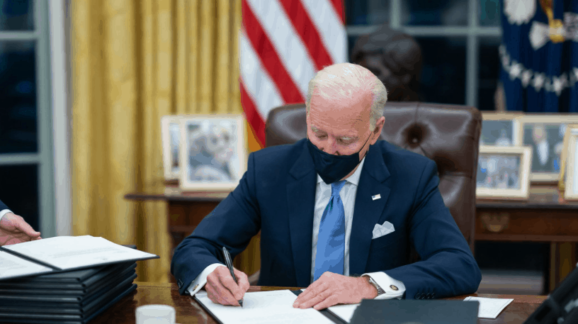Covid Emergency’s Over, Biden Declares, but Many Emergency Declarations Remain
Emergencies enable the vast expansion of the regulatory state — no wonder the government is slow to call an end to them.
Seven months ago, President Biden told a 60 Minutes interviewer that “the pandemic is over.” That didn’t stop his administration from repeatedly extending emergency declarations and measures and from seeking hundreds of billions of dollars more to combat Covid-19.
Congress has apparently had enough. A bipartisan group of legislators recently passed a resolution sponsored by Republican Representative Paul Gosar of Arizona to terminate the Covid-19 national-emergency declaration originally proclaimed in March 2020.
The support of so many Democrats is remarkable considering that less than two years ago Gosar was censured and stripped of committee assignments by House Democrats for posting an altered Japanese anime video showing a figure with Gosar’s superimposed face attacking figures with the faces of Biden and Representative Alexandria Ocasio-Cortez — a video that Gosar insisted was symbolic and not meant to “espouse violence or harm toward any member of Congress.”
Biden had repeatedly extended the national emergency and failed to provide Congress with six-month accountings of all expenditures related to dealing with the emergency, as required by the National Emergencies Act.
The resolution passed the House, 229–197, on February 1, and then, with the support of multiple organizations including the Competitive Enterprise Institute, passed the Senate with an even stronger majority of 68–23 on March 29. Biden waited until April 10, seemingly in as inconspicuous a way as possible, to sign the measure to which he had earlier expressed strong objections.
This new law is good news. Unfortunately, it is not the end of the various and sundry government emergency declarations that have enabled so much government overreach. The Covid emergency was proclaimed pursuant to sections 201 and 301 of the National Emergencies Act and Section 1135 of the Social Security Act. It gave the secretary of Health and Human Services authority to temporarily waive or modify certain requirements related to Medicare, Medicaid, the State Children’s Health Insurance Program, and the Health Insurance Portability and Accountability Act, all of which were used to expand government programs. But many other emergency measures still extant rely on different statutes.
The secretary of HHS declared a public-health emergency on January 31, 2020, under section 319 of the Public Health Service Act (42 U.S.C. 247d). That PHE remains in effect today, although the administration has finally indicated it may be allowed to expire on May 11. It was repeatedly renewed by the Biden administration to justify government expansion of the welfare state, included an explosion in numbers of Medicaid enrollees as states were barred from doing eligibility determinations and disenrolling ineligible people while the PHE was in effect. More than one in four Americans are now covered by Medicaid. States are just now starting the arduous process of doing redeterminations on bloated rolls as allowed under the recently enacted Consolidated Appropriations Act. It is estimated that 18 million people will be removed, the majority of whom are not eligible for Medicaid.
On the same day in 2020 that he declared a national emergency, President Trump issued an emergency declaration, pursuant to the Stafford Act Section 501(b), authorizing assistance for Covid-19 response efforts for all U.S. states, territories, and the District of Columbia. This allowed the Federal Emergency Management Agency (FEMA) to supplement the efforts of HHS and state, territorial, tribal, and local governments. FEMA has provided over $104 billion nationwide. FEMA has announced that it will end the “incident period” — the interval during which an emergency occurred — on May 11. While most incident periods cover only days or weeks, the more-than-three-year incident period for the Covid-19 pandemic is by far the longest in FEMA’s history.
Ending the national emergency, the Stafford Act incident period, and the Covid-19 PHE will not affect the Food and Drug Administration’s ability to issue emergency-use authorizations for various products, including tests, treatments, and vaccines. EUAs are allowed under Section 564 of the Federal Food, Drug, and Cosmetic Act. The FDA has not committed to rescinding current EUAs, refraining from issuing new ones, or completely returning to its usual approval practices.
Ending the national-emergency proclamation is a welcome step in dismantling the relentless expansion of the regulatory state that occurred during the pandemic. But there is much work left to do.
Read the full article on National Review.
